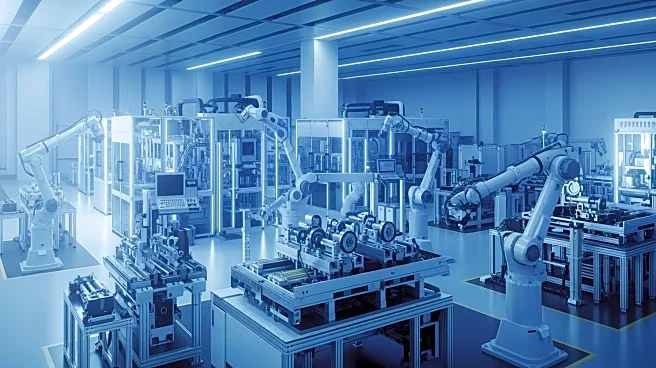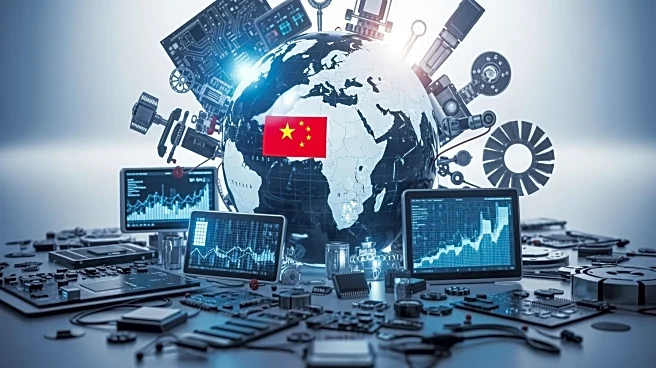What's Happening?
Applied Materials, a leading chip equipment manufacturer, is set to reduce its global workforce by approximately 4%, impacting around 1,400 employees. This decision is part of a strategic restructuring
aimed at streamlining operations and adapting to evolving market conditions. The company has begun notifying affected employees across various departments and regions. The layoffs are largely driven by increased pressure from tightened U.S. export controls on semiconductor technology, which have limited the company's ability to sell certain products and services to customers in China. Earlier this month, Applied Materials projected a $600 million revenue loss for fiscal 2026 due to these expanded curbs. The company anticipates incurring charges between $160 million and $180 million for severance and related costs, primarily recorded in the fourth quarter of fiscal 2025. This restructuring is intended to simplify the organizational structure and enhance productivity, positioning the company for long-term growth.
Why It's Important?
The workforce reduction at Applied Materials highlights the significant impact of geopolitical tensions and regulatory changes on the semiconductor industry. As U.S. export controls tighten, companies like Applied Materials face challenges in maintaining their market presence in China, a major consumer of semiconductor technology. This move reflects broader industry trends where companies are forced to adapt to shifting global supply patterns and evolving talent needs. The layoffs and restructuring efforts are aimed at creating a more agile and competitive workforce, essential for navigating the complexities of the global tech landscape. The financial implications, including the anticipated revenue loss and restructuring costs, underscore the economic pressures faced by the industry amid geopolitical challenges.
What's Next?
Applied Materials is focusing on positioning itself for long-term growth by enhancing operational efficiency and fostering innovation. The company aims to streamline decision-making processes and adapt to changing market dynamics. As the semiconductor industry continues to face geopolitical challenges and fluctuating demand, Applied Materials' restructuring efforts may serve as a model for other companies navigating similar pressures. Stakeholders, including employees, investors, and industry partners, will be closely monitoring the company's ability to execute its strategic plans and maintain competitiveness in a rapidly evolving market.
Beyond the Headlines
The decision by Applied Materials to reduce its workforce amid export curbs raises broader questions about the ethical and economic implications of geopolitical tensions on global industries. The semiconductor sector, crucial for technological advancement, is increasingly caught in the crossfire of international trade disputes. This development may prompt discussions on the need for more resilient supply chains and diversified markets to mitigate risks associated with regulatory changes. Additionally, the focus on automation and digitalization reflects a shift in workforce dynamics, emphasizing the importance of skill development and adaptability in the face of technological disruptions.












